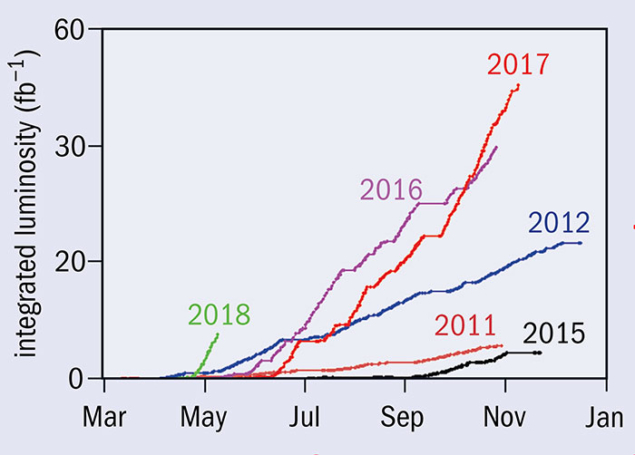
On 28 April, 13 days ahead of schedule, operators at CERN’s Large Hadron Collider (LHC) successfully injected 1200 bunches of protons into the machine and brought them into collision – formally marking the beginning of the LHC’s 2018 physics season, and the final leg of Run 2.
Stable beams were first declared on 17 April, when the LHC experiments started to take data with three bunches per beam at very low luminosities. A stepwise increase of the number of bunches resulted in the maximum number of 2556 bunches per beam being reached on 5 May.
During the last steps of the intensity ramp-up, the average peak luminosity for ATLAS and CMS was close to 2.1 × 1034 cm–2 s–1 – equalling or even surpassing the record peak luminosity with stable beams reached in 2017 – although the final calibration of the luminosity measurements still needs to be performed.
For the rest of the year, the LHC is dedicated to production mode for physics, with the operation of the machine being consolidated in parallel. As the Courier went to press in mid-May, the integrated luminosity for ATLAS and CMS had already surpassed 10 fb–1 (with a target of 60 fb–1 planned for 2018).
The faster-than-anticipated commissioning phase of the 2018 LHC restart has led to a revised machine schedule: the LHC will provide 131 days of physics operations with 25 ns-spaced proton beams, 17 days of special runs with protons, and 24 days of lead–lead collisions at the end of the year (the proton run will finish on 28 October). From December, the machine will enter Long Shutdown 2 in preparation for its high-luminosity upgrade.





